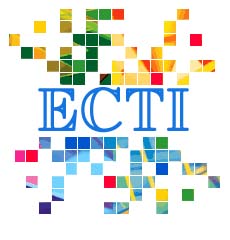Hybrid Error Concealment Using Linear Interpolation
Main Article Content
Abstract
In this paper a hybrid error concealment algorithm using linear interpolation is proposed. In the proposed hybrid algorithm, the selective motion field interpolation (SMFI) is employed to conceal the erroneous macroblock. The spatial and temporal boundary-matched errors are then used to check whether the SMFI conceals the erroneous macroblock properly. If the temporally recovered macroblock is reconstructed incorrectly, the spatial error concealment using linear interpolation is employed to conceal the damaged macroblock instead of SMFI.
It can achieve better performance subjectively as well as objectively over other error concealment techniques such as AMV, FBBM and MFI. Simulation was conducted on the H.263 codec and the experimental results reveal that the proposed algorithm significantly outperforms other concealment techniques.
Article Details
This journal provides immediate open access to its content on the principle that making research freely available to the public supports a greater global exchange of knowledge.
- Creative Commons Copyright License
The journal allows readers to download and share all published articles as long as they properly cite such articles; however, they cannot change them or use them commercially. This is classified as CC BY-NC-ND for the creative commons license.
- Retention of Copyright and Publishing Rights
The journal allows the authors of the published articles to hold copyrights and publishing rights without restrictions.
References
[2] S. Tsekeridou and I. Patas, "MPEG-2 error concealment based on block-matching principles," IEEE Trans. Circuits and Syst. Video Technol., vol. 10, no. 4, pp. 646-658, Jun. 2000.
[3] W. M. Lam, A. R. Reibman and B. Liu, "Recovery of lost or erroneously received motion vectors," Proceedings of ICASSP, pp. 417-420, March 1993.
[4] J. Zhang, J. F. Arnoid, and M. R. Frater, "A Cell-Loss concealment technique for MPEG-2 coded video, " IEEE Trans. Circuits and Syst. Video Technol., vol. 10, no. 4, pp. 659-665, Jun. 2000.
[5] J. W. Suh and Y. S. Ho, "Error concealment techniques for digital TV," IEEE Trans. Broadcast., vol. 49, no. 4, pp. 299-306, Dec. 2002.
[6] J. Zheng and L. P. Chau, "A motion vector recovery algorithm for digital video using Lagrange interpolation," IEEE Trans. Broadcast., vol. 49, no. 4, pp. 383-389, Dec. 2003.
[7] J. Zheng and L. P. Chau, "Efficient motion vector recovery algorithm for H.264 based on a polynomial model," IEEE Trans. Multimedia, vol. 7, no. 4, pp. 507-513, Jun. 2005.
[8] M. E. Al-Mualla, N. Canagarajah, and D. R. Bull, "Error concealment using motion field interpolation, Proc. of ICIP, pp. 512-516, Oct. 1998.
[9] M. E. Al-Mualla, N. Canagarajah, and D. R. Bull, "Motion field interpolation for temporal error concealment," IEE Proc.- Vision, Image and Signal Processing, vol. 147, no. 5, pp. 445-453, Oct. 2000.
[10] M. Ghanbari and V. Seferidis, "Cell-Loss concealment in ATM video codecs," IEEE Trans. Circuits and Syst. Video Technol., vol. 3, no. 3, pp. 238-247, Jun. 1993.
[11] S. Aign and K. Fazel , "Temporal and spatial error concealment techniques for hierarchical MPEG-2 video codec," IEEE International Conference on Commun., vol. 3, pp. 1778-1783, 1995.
[12] S. J. W. Suh and Y. S. Ho, "Error concealment based on directional interpolation," IEEE Trans. Consumer Electronics, vol. 43, no. 3, pp. 295-302, Aug. 1997.
[13] H. Sun and W. Kwok, "Concealment of damaged block transform coded images using projection onto convex sets," IEEE Trans. Image Processing, vol. 4, no. 4, pp. 470-477, Apr. 1995.
[14] Y. Nhang and K. K. Ma, "Error concealment for video transmission with dual multiscale Markov random field modeling," IEEE Trans. Image Processing, vol. 12, no. 2, pp. 236-242, Feb. 2003.
[15] S. Shirani, F. Kossentini, and R. Ward, "A concealment method for video communications in error-prone environment," IEEE J. Select. Areas Commun., vol. 10, no. 6, pp. 1122-1128, Jun. 2000.
[16] X. Li and M. T. Orchard, "Novel sequential error-concealment techniques using orientation adaptive interpolation," IEEE Trans. Circuits and Syst. Video Technol., vol. 12, no. 10, pp. 857-864, Oct. 2002.
[17] J. W. Park and S. U. Lee, "Recovery of corrupted image data based on the NURBS interpolation," IEEE Trans. Circuits and Syst. Video Technol., vol. 9, no. 10, pp. 1003-1009, Oct. 1999.
[18] J. W. Park, J. W. Kim, and S. U. Lee, "DCT co-efficients recovery-based error concealment technique and its application to the MPEG-2 bit stream error," IEEE Trans. Circuits and Syst. Video Technol., vol. 7, no. 12, pp. 845-854, Dec. 1997.
[19] Y. Wang, Q. F. Zhu, and L. Shaw, "Maximally smooth image recovery in transform coding," IEEE Trans. Commun., vol. 41, no. 10, pp. 1544-1551, Oct. 1998.
[20] Y. H. Han and J. J. Leou, "Detection and correction of transmission errors in JPEG images," IEEE Trans. Circuits and Syst. Video Technol., vol. 8, no. 4, pp. 221-231, Apr. 1997.
[21] G. Yu, M. Liu, and M. W. Mercellin, "POCS-based error concealment for packet video using multiframe overlap information," IEEE Trans. Circuits and Syst. Video Technol., vol. 8, pp. 422-434, Aug. 1998.
[22] H. Sun, K. Challpali, and J. Zdepski, "Error Concealment in Digital Simulcast AD-HDTV Decoder," IEEE Trans. Consumer Electronics, vol. 38, no. 3, pp. 108-116, Aug. 1992.
[23] M. H. Jo and W. J. Song, "Error concealment for MPEG-2 video decoders with enhanced coding mode estimation," IEEE Trans. Consumer Electronics, vol. 46, no. 4, pp. 962-969, Nov. 2000.


